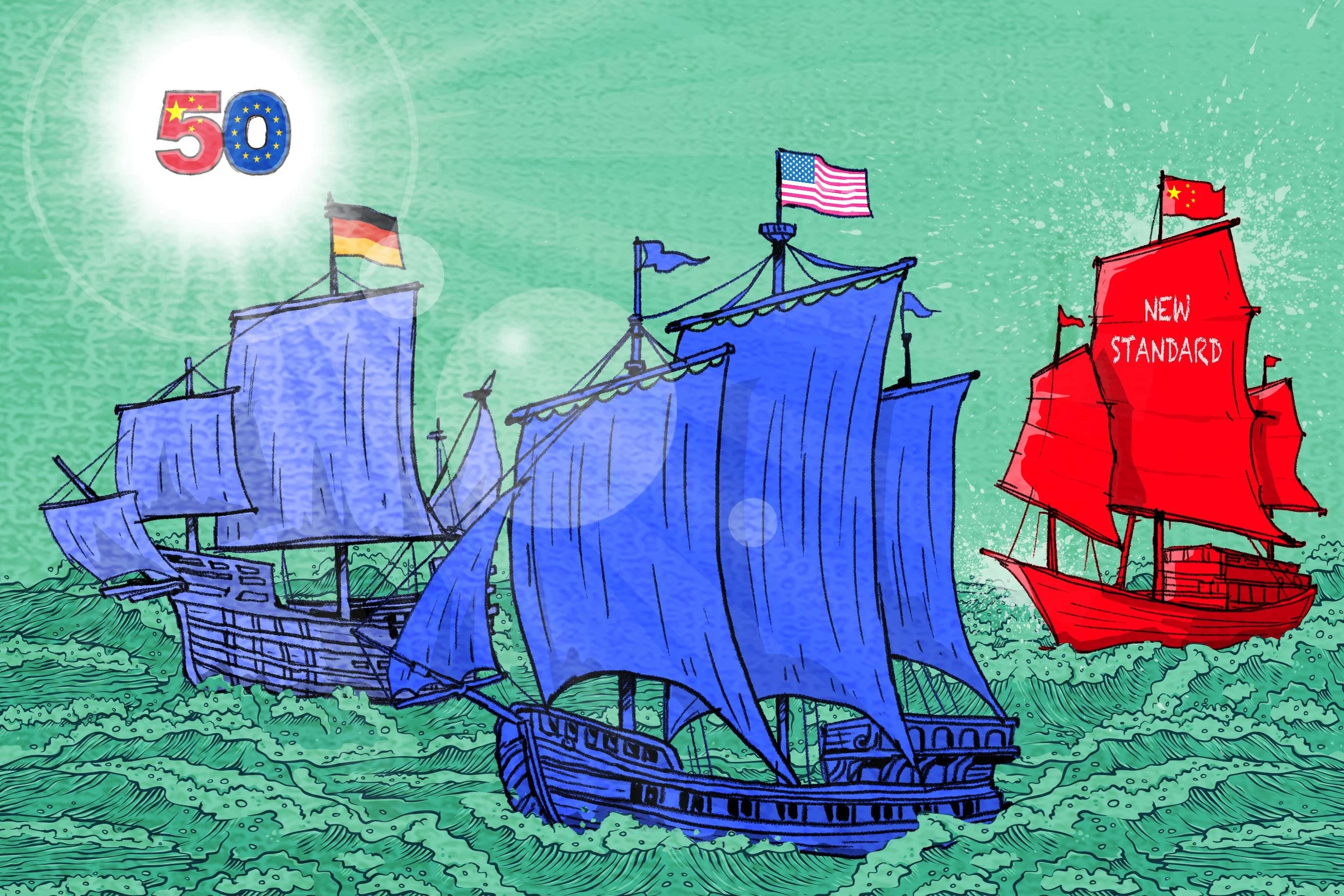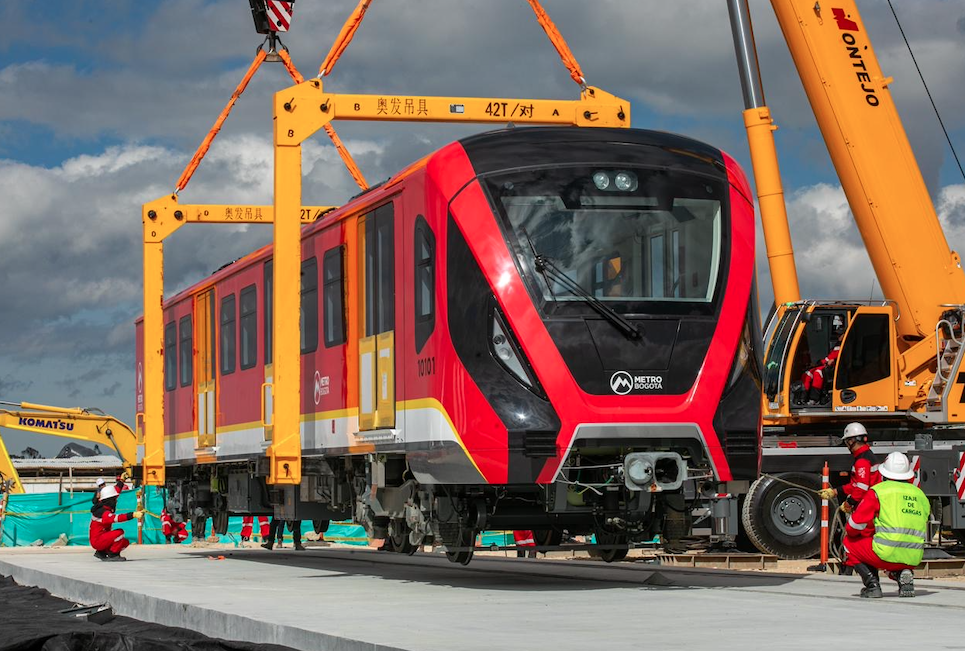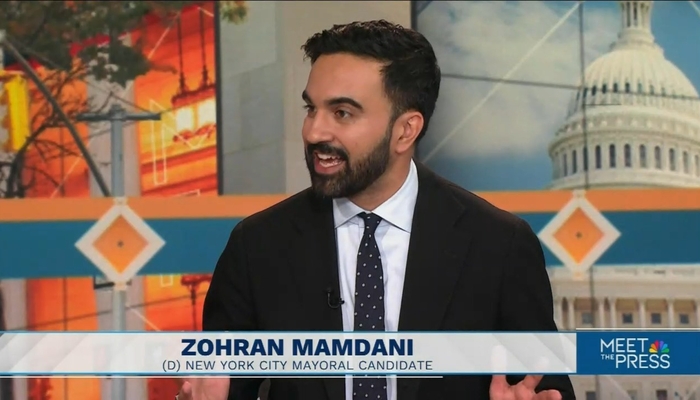By Mandy Zuo
Copyright scmp

This year marks half a century of formal diplomatic relations between China and the European Union, as well as the 25th anniversary of the founding of the European Union Chamber of Commerce in China. The fourth story in our series examining ties between the two powers focuses on China’s efforts to influence the bodies that set global manufacturing standards, an arena where Europe plays a leading role.
The 19th-century German industrialist Werner von Siemens once famously remarked that “he who owns the standards, owns the market”.
The maxim still holds true over a century later. Around the world, companies and governments are quietly investing huge resources to try and define the technical standards for new products – from electric cars to robots.
The stakes of this largely hidden battle can be enormous: the winners essentially get to write the rules for a global industry, forcing their competitors to adapt to specifications that were developed to suit the winners’ own products.
For decades, the United States and Germany have dominated the standard-setting process, giving companies like Intel and Siemens a significant advantage. But that is now starting to change.
China, once known as a factory hub for low-end products, is rapidly emerging as a technological leader in a slew of industries. And it is intent on moving from being a rule-taker to a rule-maker – the phrase “top-tier companies set standards” becoming a mantra among China’s business leaders.
The country has been working steadily to increase its influence over global standard-setting forums, helping Chinese experts gain senior positions on key committees and encouraging Chinese companies to file an ever greater number of patents.
At the International Organization for Standardization (ISO) – a top standard-setting body based in Geneva – China is now just behind the US and Germany in terms of the number of working groups it convenes, as well as its representation on technical committee and subcommittee secretariats, according to ISO figures.
“China has greatly expanded its involvement in international standardisation in recent years – especially in future-oriented topics,” the German Institute for Standardisation, known as DIN, said in a statement to the Post.
That is starting to translate into a growing number of Chinese-led global standards. About 9 per cent of the standards published by the ISO last year came from groups led by Chinese experts, according to calculations made by a veteran Chinese researcher.
Chinese authorities have hailed several breakthroughs in recent months, the latest example being the publication of a Chinese-led international standard for nanodiamonds – an industrial material used in fields including aerospace, electronics and new-energy vehicles.
In July, China’s State Administration for Market Regulation said the ISO’s publication of the standard marked a “historic leap” for the country’s nanoscale diamond industry.
Just a week before, the country’s Ministry of Industry and Information Technology announced the ISO had published a new Chinese-led global standard for autonomous driving testing scenarios.
When you set the standards in the first place, the entire industry will be yours later
Sally Wen, research director
And a few months before that, Chinese experts played a major role in the formulation of international standards for elderly care robots published by the International Electrotechnical Commission (IEC).
While China remains a minority player for now, its rapid progress has unnerved some in the West. In June, a German business group representing small- and medium-sized manufacturers called for greater efforts in Germany and Europe to promote their own standards and counter the growing challenge from China.
“China uses standardisation as an instrument to implement its economic policy interests. The country is striving for Chinese standards to dominate, which would give its own companies a competitive advantage,” the Mechanical Engineering Industry Association said in a position paper.
US Treasury Secretary Scott Bessent, meanwhile, claimed in an interview with CNBC in August that Washington’s recent decision to allow some advanced chips made by Nvidia and AMD to be exported to China was partly driven by a desire to ensure that America remained the global standard-setter for semiconductors.
“What we would like, and what the industry has made a very strong case for, is for China and the rest of the world … to develop the US standard as the global standard,” he said.
“The last thing we want is a Huawei belt and road where Huawei is selling chips to the rest of the world and US technology is excluded,” Bessent added, referring to Chinese tech giant Huawei Technologies.
Unlike its competitors, China is taking a systematic approach to boosting its position as a standard-setter.
Whereas the US and Germany tend to let companies take the lead, Beijing embraces a holistic strategy that involves a coordinated effort by government, universities, and both state-owned and private firms.
If Chinese companies are able to lead the creation of new technical standards in emerging fields, they have the opportunity to become dominant players in the market, said Sally Wen, director of the International Standardization Research Center under the Shenzhen Institute of Standards and Technology.
“When you set the standards in the first place, the entire industry will be yours later,” said Wen. “Leading international standards means guiding the market at a technical level, thereby helping to increase the market share of your products.”
China has been investing “extensive financial resources” in standardisation, with its universities – most of which are public – playing an important role, Germany’s DIN noted.
The Chinese government has vowed to establish programmes focused on standardisation at more than 15 institutions of higher education by the end of the year, according to an action plan on nurturing “standardisation talent” jointly released by several government departments in 2023.
It has also set a target of setting up more than 60 “international standardisation innovation teams” by the same date, with at least a quarter of the people on those teams required to be members of national professional standardisation technical committees or registered experts at international standards organisations.
China may be looking slick on the outside, but we are still rough on the inside
Sally Wen, research director
Chinese state-owned enterprises in industries ranging from power generation to petroleum are also investing significant effort in developing standards, as their performance is judged partly on their ability to get international standards published, according to Wen.
But China’s private firms are also playing a big role. Zhou Yunjie, CEO and chairman of the Chinese home appliances giant Haier, recalled the company’s struggle to gain recognition as a standard maker at the annual session of the National People’s Congress in March.
Haier first proposed an international standard for refrigerator freshness preservation at an IEC meeting in 2014, but it faced opposition from several country representatives, who argued that a Chinese company could not jump “from zero to one” by creating an international standard, Zhou said.
A decade later, Haier operates 10 research and development centres globally and has led the development of more than 100 international standards, he said. About seven out of every 10 home appliance patents registered worldwide now come from China, he added.
“The knowledge of standardisation and the quality of the proposals made by Chinese experts in the standardisation committees has increased significantly,” the DIN said in its statement.
“At the same time, China is investing heavily in the development of its own standards, partly in order to reduce technological dependencies and achieve global leadership positions.”
Yang Youwen, an associate professor at the Hangzhou-based China Jiliang University whose research focuses on standardisation, said that China’s growing influence over international standards reflected its long-term investment in innovation.
“China is transitioning from an accepter of international standards to a leader in high-level standards in certain fields, thanks to the Chinese government and enterprises’ emphasis on technological innovation and continuous investment,” she said.
However, analysts stressed that China’s influence was currently “far from threatening the status of Europe and the US”.
As of the end of 2022, China had led 1,337 international standards, according to an official Chinese database. The total only accounts for about 5 per cent of all the standards published by the ISO, IEC and International Telecommunication Union (ITU), Yang’s research found.
At the ISO, China led 142 standards last year, according to Wen, quoting Chinese official data that is not publicly available. That represents about 9 per cent of the 1,533 standards published by the body in 2024.
For Wen, who has been researching the issue for two decades, Chinese experts often still struggle to become influential figures during group discussions, as they lack the confidence and soft skills of their European and American counterparts.
“Those figures show that we may be looking slick on the outside, but are still rough on the inside,” she said.
Though China is represented in ever greater numbers at global organisations, it lacks experts who combine technical expertise with language skills and an open personality, all of which are crucial to performing effectively on the world stage, according to Wen.
“There’s absolutely a long way for us to catch up,” she said.
Additional reporting by June Xia



